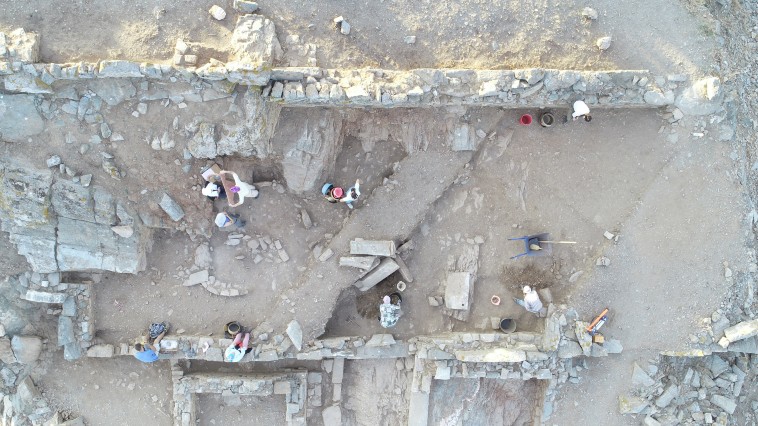
The recent excavation research of the Acropolis of the ancient city of Kythnos (today’s “Vryokastro”), a collaborative project of the Department of Archeology of the Department of History, Archeology & Social Anthropology of the University of Thessaly and the Ephorate of Antiquities of the Cyclades of the Culture Ministry.
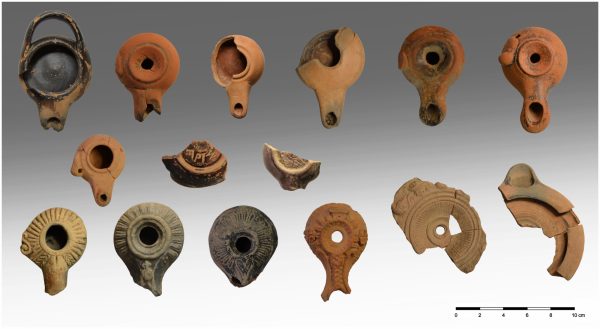
The city of Kythnos has been continuously inhabited since the 12th century BC. to the 7th century AD
The work of the last period focused on the excavation of the buildings of the Acropolis that had come to light in 2021. The Southern part of the acropolis was intended for installations of a military nature, undoubtedly also of the Macedonian garrison that Philip V installed in Kythnos in 201 BC. Only some clearing was carried out in this area, which brought to light a series of cisterns, which apparently provided water supplies in time of siege.
The northern part of the plateau is occupied by a sanctuary, which was identified in 2021 with certainty as a sanctuary of Demeter and Kori. Here the investigations continued in three buildings (no. 3, 4 and 6) as well as in outdoor areas.

What research showed
Initially, the investigation of the two-sided Building 4, measuring 7.50 x 5.70 m., which is undoubtedly identified with a temple of the classical times, was completed. In the Western site, three cases of upright stone slabs were found in 2021, partially embedded in a layer of ash containing many burnt animal bones. From the back (Eastern) room (‘abyto’), many bones of small animals also come, but mainly pig jaws, censers, lighting vessels, as well as clay female figurines.
Between this temple and the oblong Building 3 further south, two almost square small buildings, 5 and 6, with opposite entrances are interposed. During the last period, the investigation of West Building 6 (dim. 4.85 X 4.25 m.) was completed. Its interior is configured internally on at least three levels. This seems to have originally been the main stepped access to the mosque, which was removed in Roman times and incorporated into Building 6, possibly to serve cult needs (perhaps as a simulation of the descent into Hades?).

The interior of the temple
The survey was also completed around the antichrist, the earliest Building 5, which is probably identical with a second smaller temple (dimensions 3.80 x 3.30 m.) as, as was seen in 2021, it contained various votive offerings under its last floor. A well-kept cobbled floor was uncovered in the narrow corridor between Buildings 4 and 5, suggesting that these two structures were in use at the same time.
Excavation work, however, focused on Building 3, which is 21 meters long and 8.50 meters wide. It is characterized by trapezoidal masonry and has a monumental entrance in the middle of the elongated North wall.
Two zones of squares were excavated inside the building which allowed its layout to be clarified to some extent. It is noteworthy that most of the offerings of the sanctuary come from the abandonment embankments of the building in question. In the Eastern part of the building, a series of jagged recesses in the natural rock, defined by walls, were revealed, which seem to have formed spaces and “cases” for keeping and depositing votive offerings, as in these areas there was a strong concentration of finds of all categories.
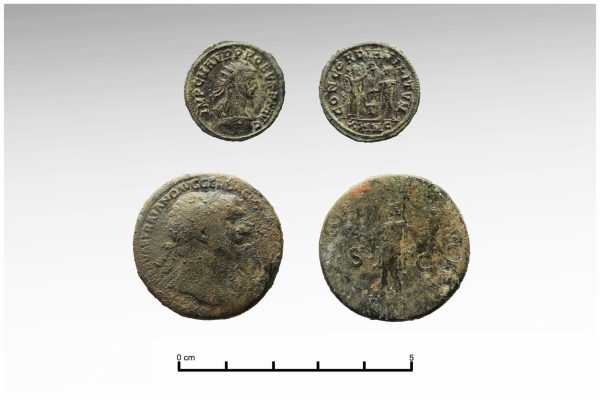
In this part of the building, a horseshoe-shaped stone grating was also discovered, dia. c. 2.50 X 2 m., complete with ash and scattered incandescent flints and with several burnt animal bones, as well as a significant concentration of votive offerings. The whole configuration here creates doubts as to whether this part of the building was roofed. A large concentration of votive offerings was also observed in a lane along the rear (South) wall of the Western half of the building. From this wall, diatonic flat stones project internally at regular intervals and at the same low height, suggesting the presence here of a wooden shelf on which votive offerings must have been placed.
Between the two temples (no. 4 and 5) and the elongated Building 3, a rampart is formed with an entrance from the East, which defined at some point during the long course of use of the sanctuary (7th century BC to 3rd – 4th centuries AD) an extensive “repository” which contained innumerable votives. Research here was completed by bringing to light many hundreds of intact or nearly intact finds, mainly clay figurines and polymixed lighting vessels.

Hundreds of clay archaic-Hellenistic figurines
The exact use and dating of all the uncovered structures will be determined when the study of finds and excavation data is completed. In general, the search of the interior of the buildings led to the finding of numerous votive offerings. The main volume, however, comes from Building 3 and from the “depositor”.
Many hundreds of clay Archaic-Hellenistic figurines were collected (intact or almost intact exceeded 2000),women’s and children’s, fewer male figures, especially actors and symposium attendees, Hermaic columns, piglets, turtles, lions, rams, birds, etc.
Archaic-Roman lamps
Also collected were many archaic-Roman lamps and mixed ritual lighting vessels, ring-shaped “kerni” with adjective miniature vessels, a number of adjective miniature hydria that have been detached from ritual vessels, excellent quality ceramics, mainly Attic black-figure and red-figure (hydrias, kalpis, etc. ,), but also of other laboratory centers (Corinthian, Cycladic and Eastern Aegean).
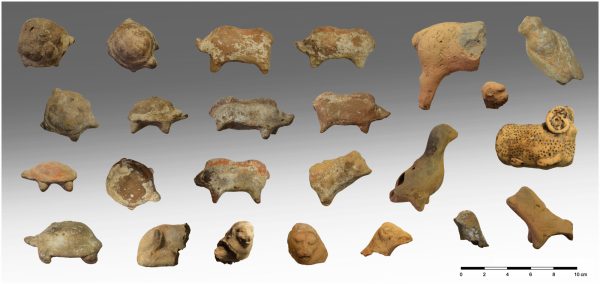
The votive offerings also include certain copper, silver, bone, and glass jewelry, marble and alabaster vessels (flasks, compasses), etc. Some bronze Roman coins have also been found (eg Trajan’s sestertius, after 106 AD, and Diocletian’s coin of 285 AD). However, a silver Kythnian coin with the head of Apollo on the obverse and a lyre on the reverse is of special interest, as the Kythnian coins of the Hellenistic period known to date are all bronze.
Several drinking vessels, mainly from Roman times, coming both from the interior of the temple (Building 4), as well as from the various embankments inside Building 3 and from the “depositor”, are identified as ritual as they have inscriptions carved before firing and are women’s offerings, while confirming that the sanctuary was dedicated to the worship of both Demeter and Kori. Temporarily, we could even assume that Building 4 was the temple of Demeter, while the adjacent smaller Building 5 was that of Kori.
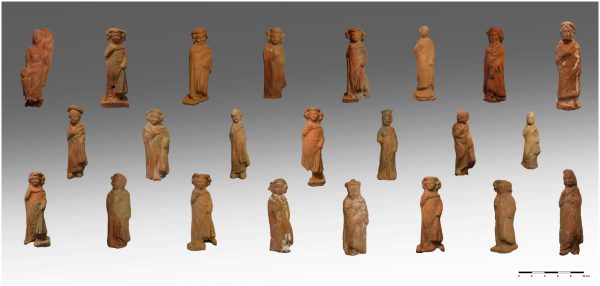
Inside the door of Building 3, an inscribed monumental pedestal was found, moved from its original position. 1.43 X 0.47 X 0.21 (thickness), which preserves the inscription of the late Hellenistic period “Niriis damiourogos”, which probably refers to some official of the sanctuary. The use of the Doric dialect once again confirms its parallel use with Ionic in Kythnos.
Many of the above-mentioned votives also indirectly or directly refer to the worship of the two deities, as well as various individual finds, e.g. another cystophore figurine or several fragments of imported Eleusinian “kernoi”.

The excavation program
The five-year excavation program at Vryokastro Kythnos (2021-2025) is being conducted under the direction of Professor of Classical Archeology Alexandros Mazarakis Ainianos and the Curator of Antiquities Dr. Dimitris Athanasoulis. The researches of the University of Thessaly and the EFA Cyclades are also supported by the DG of Aegean and Island Policy, the Municipality of Kythnos, the Association of Friends of the Archaeological Museum of Kythnos, the captain of the ship “MARMARI”, and especially the generous sponsor of the excavation program, and Thanasis Martinos. The interdisciplinary research team of archaeologists, architects, conservators, zooarchaeologist, archeologist, etc. framed 33 archeology students of the University of Thessaly, as well as two students from France.
Latest News
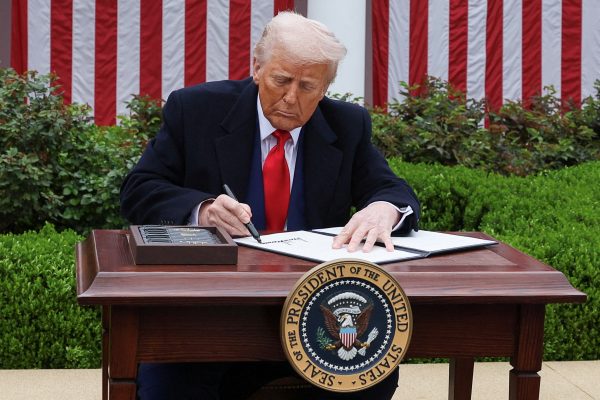
Trump Tariffs Jeopardize Growth: Piraeus Chamber of Commerce
The tariffs, aimed at reducing the U.S. trade deficit, are expected to have both direct and indirect effects on the European economy

EU Condemns Trump Tariffs, Prepares to Retaliate
As tensions escalate, the EU is expected to continue negotiations with Washington while preparing for potential economic retaliation.
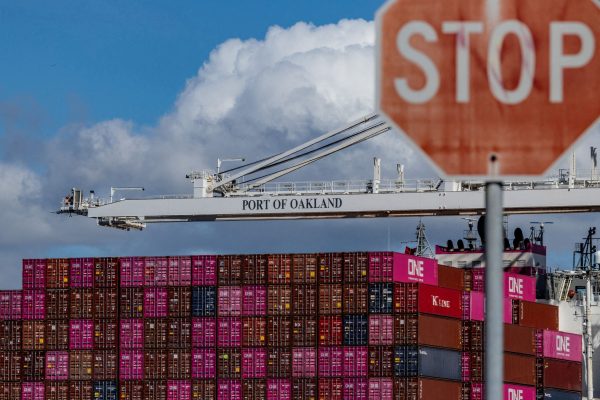
The Likely Impact of Trump Tariffs on Europe and Greece
Trump tariffs are expected to negatively affect economic growth in the Eurozone while Greece's exports could take a hit.

Motor Oil Results for 2024: Adjusted EBITDA of 995 mln€; Proposed Dividend of 1.4€ Per Share
Adjusted EBITDA for 2024 was down 33% yoy. The adjusted profit after tax for 2024 stood at 504 million euros, a 43% decrease from the previous year

Cost of Living: Why Greece’s 3% Inflation Is Raising Alarm
Greece appears to be in a more difficult position when it comes to price hikes, just as we enter the era of Trump’s tariffs.
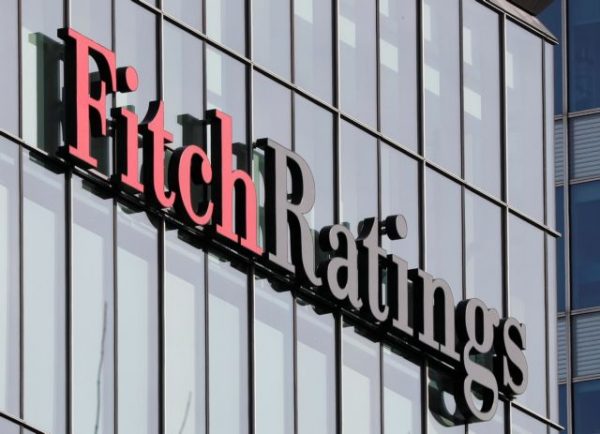
Fitch Ratings Upgrades the Four Greek Systemic Banks
NBG’s upgrade reflects the bank’s ongoing improvements in its credit profile, Fitch notes in its report, including strong profitability, a reduction in non-performing exposures (NPEs), and lower credit losses
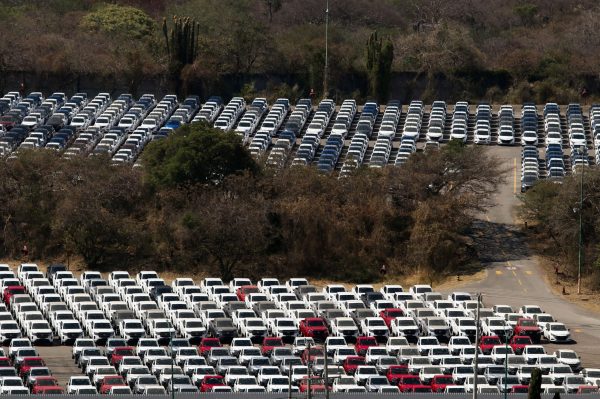
Trump to Announce Sweeping New Tariffs Wednesday, Global Retaliation Expected
With Trump's announcement just hours away, markets, businesses, and foreign governments are bracing for the fallout of one of the most aggressive shifts in U.S. trade policy in decades.

Inflation in Greece at 3.1% in March, Eurostat Reports
Average inflation in the eurozone settled at 2.2%, compared to 2.3% in February
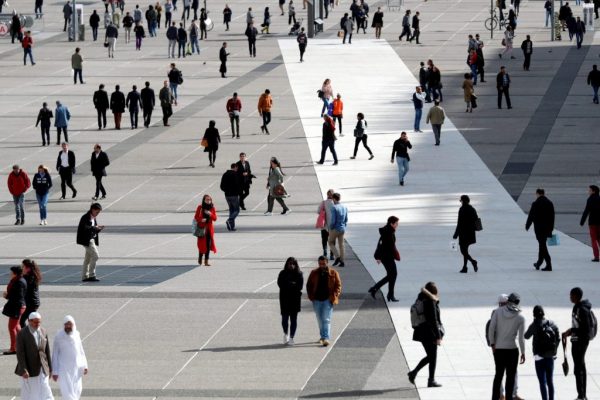
Greece’s Unemployment Rate Drops to 8.6% in February
Despite the overall decline, unemployment remains higher among women and young people.
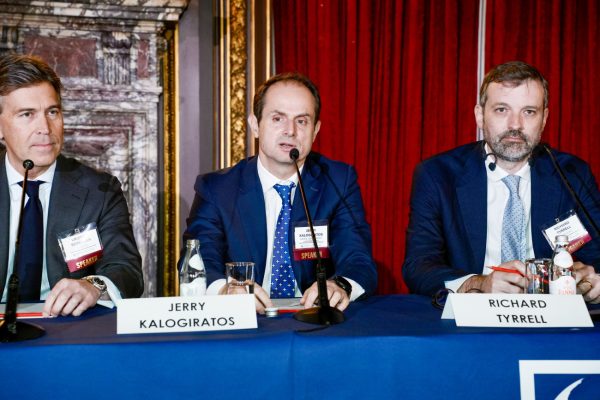
Jerry Kalogiratos Highlights Key Role of Energy Transition and Data Demand in LNG Outlook
Energy transition and the prospects of LNG were discussed at Capital Link’s 19th Annual International Maritime Forum, during a panel discussion with Jerry Kalogiratos (Capital Clean Energy Carriers Corp.)

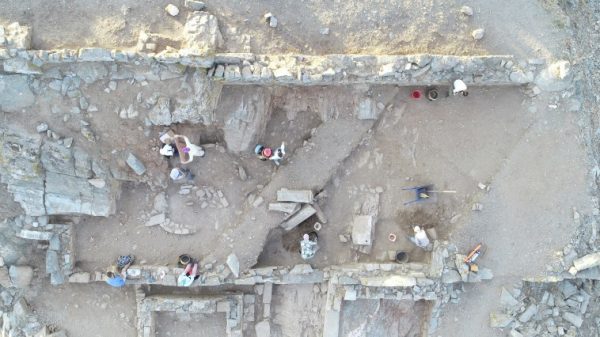
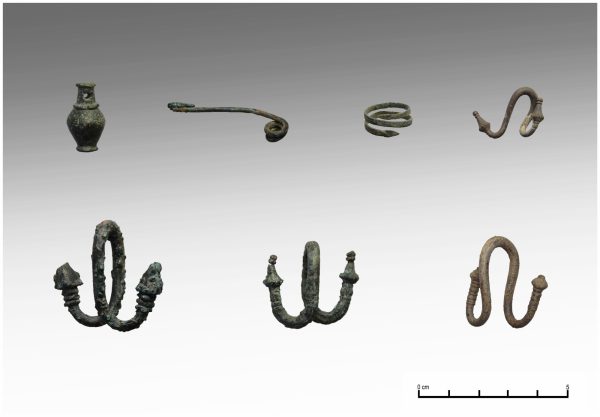
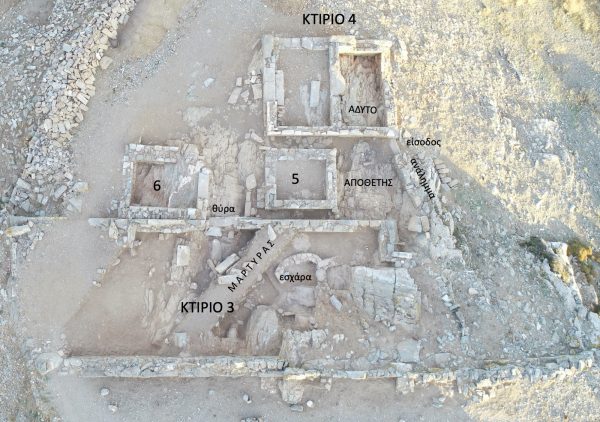
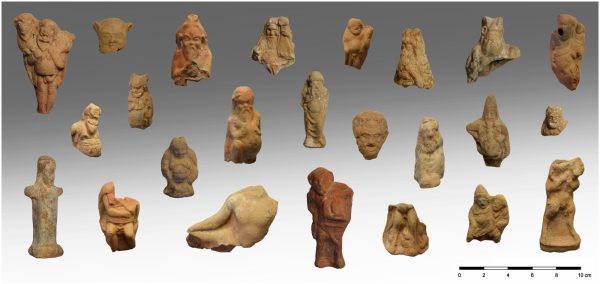























![ΕΛΣΤΑΤ: Αυξήθηκε η οικοδομική δραστηριότητα κατά 15,6% το Δεκέμβριο [πίνακες]](https://www.ot.gr/wp-content/uploads/2025/03/DSC9655-2-1024x569-1-90x90.jpg)

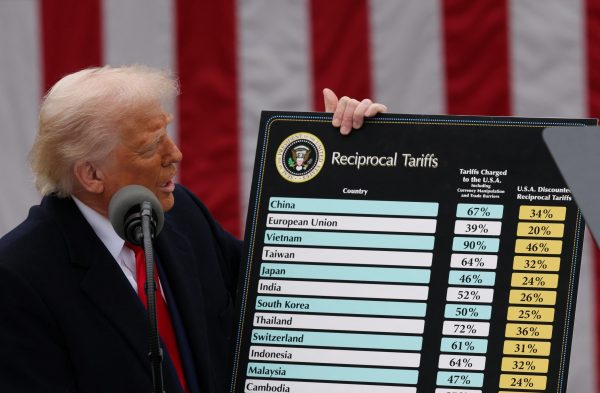

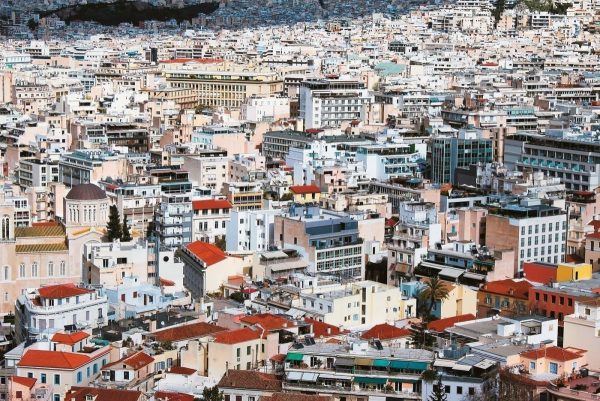
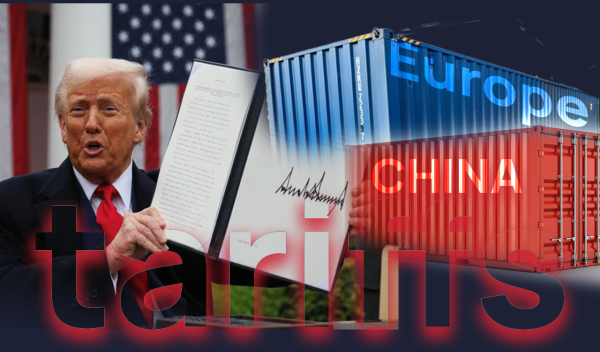
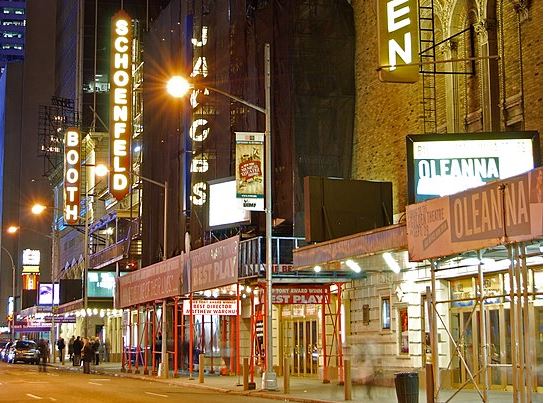
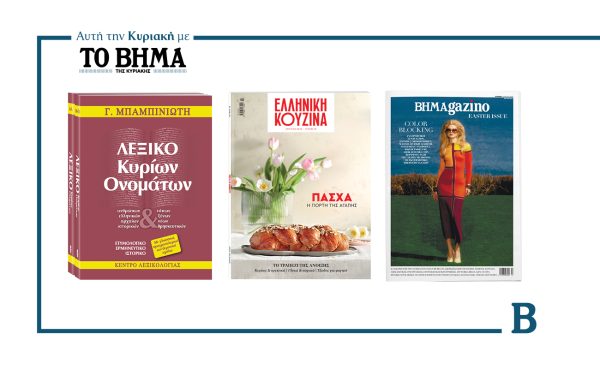
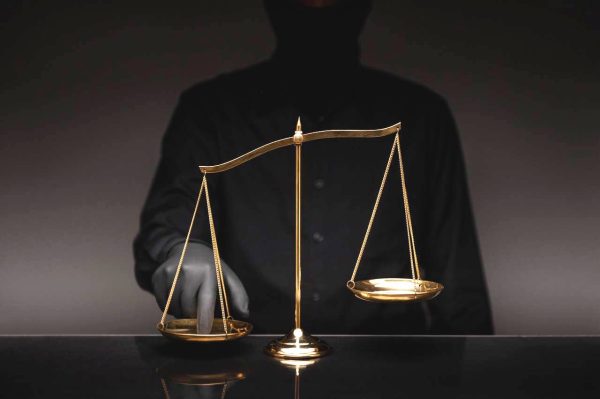
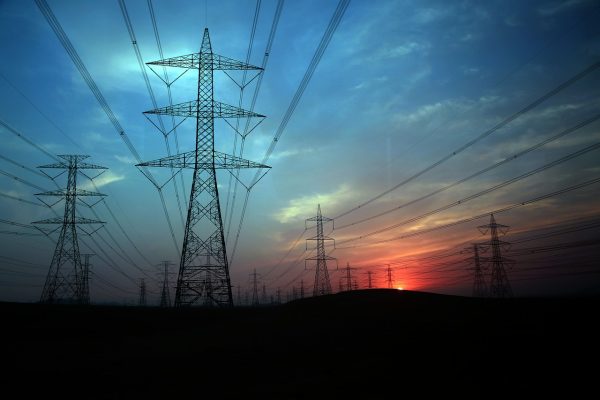
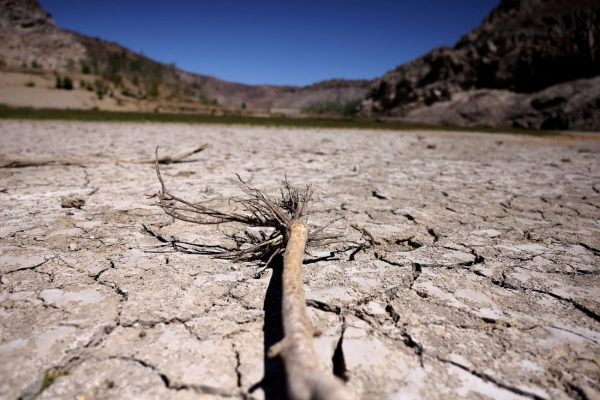

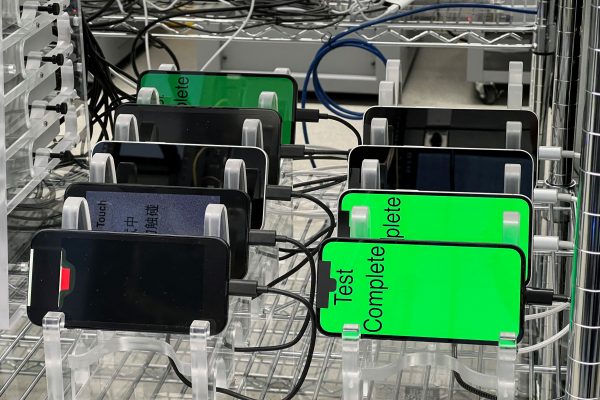
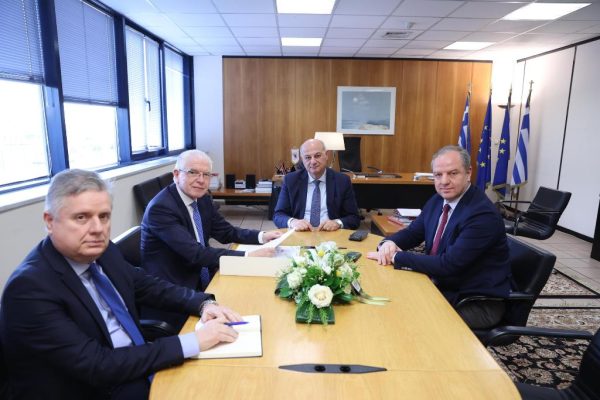
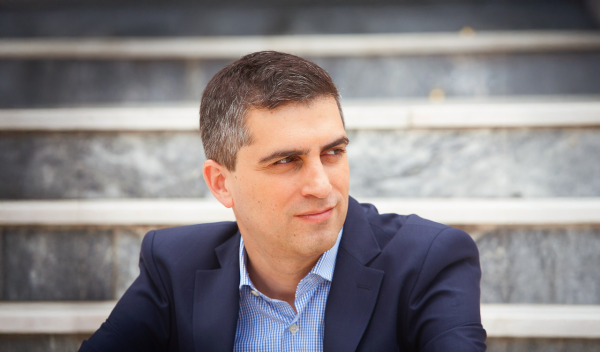
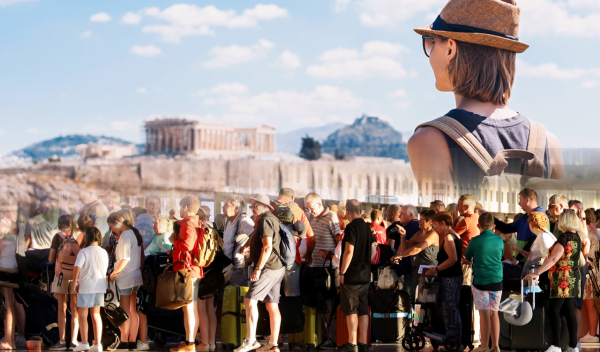

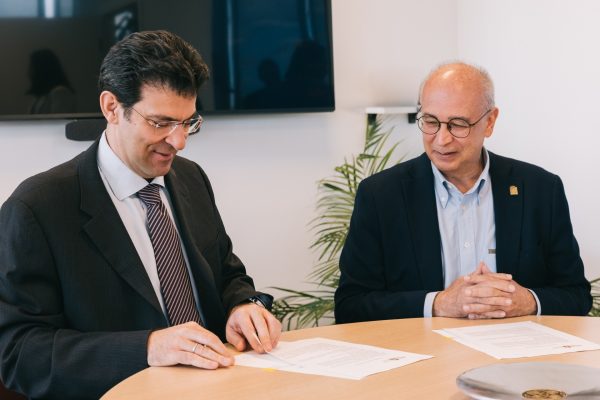
 Αριθμός Πιστοποίησης
Αριθμός Πιστοποίησης